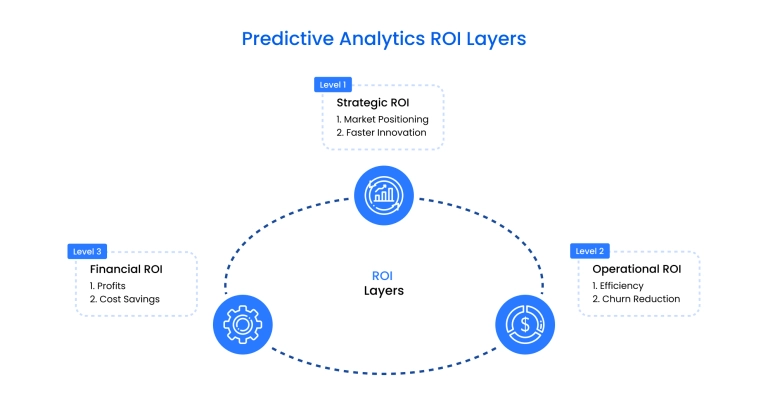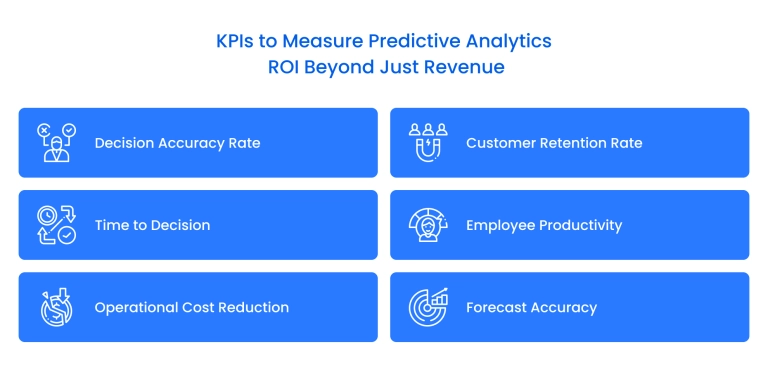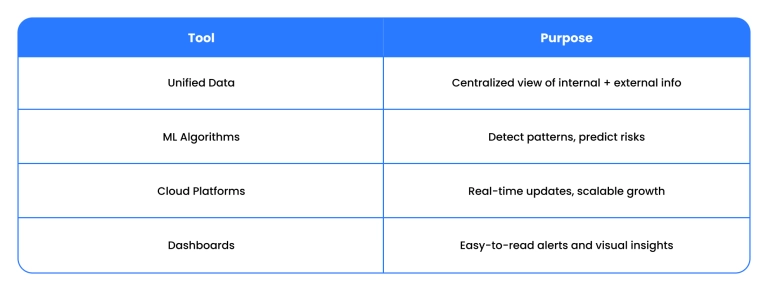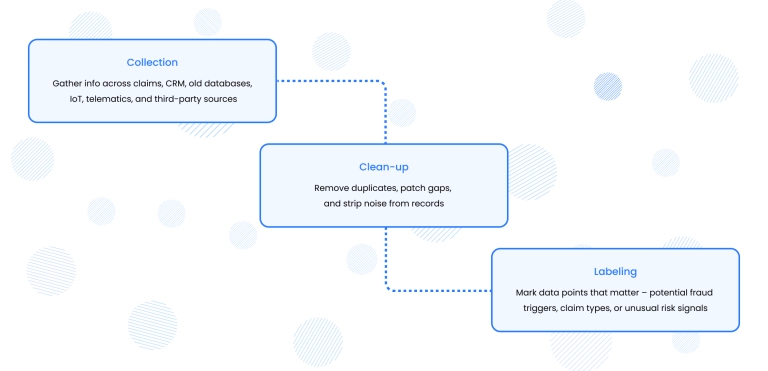Insurers using predictive analytics have seen a 23% improvement in retention rates and a 45% increase in successful cross-selling compared to those using traditional methods. That's not an incremental gain – it's a fundamental shift in managing claims, fraud, and risk.
If you're ready to stay ahead of competitors, reduce costs, and serve your customers with precision, data-driven tools are the way forward. Forget guesswork. The next generation of insurance is about making your data work smarter for you.
In this guide, you'll learn how predictive analytics sharpens decision-making, streamlines operations, and builds trust using practical tools like AI, blockchain , and digital twins. Discover proven strategies, step-by-step implementation methods, success stories from industry leaders, and tips to choose the right partners and platforms.

Here's what you'll find:
- Why predictive analytics means better ROI, smarter pricing, and risk selection
- Key insurance analytics use cases: stopping fraud, boosting retention, and speeding up claims
- Practical steps for integrating analytics, upskilling your team, and managing change
- The tech trends and data privacy standards shaping insurance
- A playbook for picking vendors that match your values around compliance, transparency, and ethics
Predictive analytics in insurance: Core ideas and benefits
You're aiming for better decisions, faster operations, and lower costs. The old methods of insurance just don't cut it anymore. Predictive analytics lets you work smarter – not harder – by guiding every choice with real, actionable data. Let's bust the myths and see how real teams use these tools to stay nimble and confident.
Why predictive analytics matters
Predictive analytics looks at past data to find patterns to forecast the future. For insurers, that turns huge stacks of customer, claims, and policy data into signals you can act on. Instead of blind guesses, you spot who poses risk, who's likely to commit fraud, and when your pricing strategy needs to shift.
You get to use internal records and external feeds – credit scores, sensor data, and even social activity compete with gut instinct and outdated formulas. The result? More certainty in underwriting, fewer losses, smarter fraud detection , and a business that keeps moving forward.

Real results: ROI, pricing that fits, and stronger underwriting
Predictive analytics brings measurable improvement:
- Better ROI: McKinsey found insurers using advanced analytics can see a 5-10% increase in revenue within a few months, thanks to sharper risk selection, faster claims , and precise pricing.
- Pricing that matches risk: When new data updates your pricing models, you can adjust premiums instantly and win customers that fit your appetite for risk. Insurance companies prioritizing data analytics reported 28% more accurate pricing strategies than industry averages and 35% faster time-to-market.
- Data-driven underwriting: Automated models move beyond checklists, writing policies faster and with fairer, more accurate risk scores.

Fraud detection and operational efficiency
Predictive analytics works like an extra set of eyes. Algorithms look for odd patterns – say, repeated claims or fake info – and flag them on the spot. Suddenly, you're stopping fraud before it costs you money.
And it goes further:
- Claims processed faster, fewer manual reviews
- Lower admin costs, less busywork for your team
- Instant reminders for coverage tweaks and renewals
The payoff? Staff spend more time on strategy and real customer care.
The tools that make it work
Predictive analytics is built on a few key parts:

Start smart: Pilot first, match tech to your business goals, and support your people with hands-on training. Predictive analytics can get complicated, but with strong partners, you go live without drowning in tech headaches.
The most impactful use cases in insurance analytics
You want smoother operations, fewer headaches, and a steady bottom line. Predictive analytics helps you see around corners, address issues before they spiral, and keep your business – and customers – secure.
Customer churn: Spotting problems before they build
Keeping loyal customers is tough. People leave for dozens of reasons. But machine learning can see the warning signs – like less engagement, slower claim activity, or shopping for new quotes.
What analytics offers:
- Risk triggers: Spot early signals that a policyholder may leave.
- Timely outreach: Use insights to send offers or reach out before they walk.
- Retention at scale: Focus efforts on valuable customers you want to keep.
Insurers using churn prediction grew retention rates by over 20% – real impact backed by data.
Smarter fraud prevention
Fraud eats up time and resources, whether fake accidents or inflated damages. Analytics tools hunt for outliers – sudden jumps in payouts, weird claim patterns–and flag risky claims instantly.
That means:
- Faster, more accurate reviews
- Proactive alerts to slash losses before they pile up
- Automated screens instead of endless paperwork
Some companies see fraud costs down 40% after rolling out predictive models.
Claims: Faster decisions, happier customers
Slow claims frustrate everyone. Analytics help triage, sort, and approve claims faster. Predictive models guide which payouts are straightforward, which need a second look, and where fraud could sneak in.
You get:
- Quicker, more confident claim approvals
- Happier customers, faster payouts
- A reputation for service, not delay
What you stand to gain
Investing in analytics means:
- Advance warnings on risks and churn
- Speedier, surer claims processes
- Less fraud – and less stress for your team
- Resources freed up for real business building
Binariks helps you implement, train, and fine-tune these systems. No jargon, just practical support you can rely on.
Getting started: Implementation that works
Rolling out predictive analytics shouldn't be overwhelming. If you're fighting fires or stretched thin, you want real steps – not vague tech promises. Here's how we help you get up and running.
Data prep: The backbone of good analytics
Forget jumping in headfirst. Good analytics starts with good data. That means:

Without this prep, your models won't deliver. We'll get it sorted so you see results quickly.
Training and launching models
Training a predictive model means feeding it clean data, so it learns patterns and can spot issues before they cause trouble.
Here's what works:
- Start with test projects using small datasets
- Measure real-world accuracy
- Improve based on feedback, then launch in actual workflows
When it's working, we take it live – fast – with tight, easy integrations, in the cloud or on-premises.
IoT, telematics, and live external feeds
Sensors and devices open new doors – driver scoring, crash alerts, smart home data. Tie this to analytics, and your risk scoring adapts in real time.
- Use telematics for automated safety scores and live claims
- Plug in weather or disaster feeds for instant risk updates
- Create one clear dashboard with info from every source
Less manual work, more real insight.
Making analytics customer-facing
Keep your analytics out of the back room – let customers benefit up front.
- Instant, data-based quotes
- Real-time updates and push alerts
- Smarter, smoother claim submissions
Both your team and your customers win.
Change management: Make it stick
Even the best tech fails if people don't use it. Binariks provides:
- Guidance for underwriters, adjusters, and IT
- Clear rollout plans, no mystery changes
- Staged deployment, with help as you need it
Predictive analytics and AI isn't to replace your team – it's to free them up for the work humans excel at.
Ready to go from hectic to confident? We're here for support and collaboration – long after implementation is complete.
The new frontier: Tech, standards, and ethics
Let's be real. Tech moves quickly, but you have to keep customer data safe, follow the rules, and pick strategies that last.
Predictive analytics, blockchain, digital twins, and AI aren't just buzzwords; they help you build a stronger insurance business when used thoughtfully.
The tech toolbox: Blockchain, digital twins, AI
- Blockchain: Promises traceable, time-stamped records for claims – helping spot and block fraud, not just talking about it.
- Digital twins: You get virtual copies of real assets (buildings, vehicles, people) to run risk tests and adjust policies before losses hit.
- Generative AI : Cuts manual review by instantly mining thousands of data points – speeding up analysis and reducing human error.
These tools aren't silver bullets. The smart move is blending them with solid business judgment and clear ethics to protect your brand and bottom line.
Best practices across borders
Regulatory frameworks for predictive analytics in insurance vary dramatically by region, and staying compliant means understanding where the lines are drawn – and how they keep shifting.
| Region | Key Regulations | Practical Impact |
| EU | EU AI Act (High-Risk), GDPR, Digital Operational Resilience Act (DORA) | Mandatory human oversight, bias testing, technical documentation; vendor resilience requirements |
| US | State patchwork (CPRA, Colorado AI Act), NAIC guidance | Algorithmic impact assessments vary by state; opt-out mechanisms for automated decisions |
| UK | ICO AI guidance, pro-innovation framework | Focus on explainability over rigid compliance; lighter than EU but still demanding |
| APAC | Singapore FEAT, China PIPL, fragmented approaches | Data localization (China), principle-based governance (Singapore) |
Regardless of jurisdiction, solid predictive analytics programs share common traits:
- Share openly how customer data is used
- Build flexible analytics that adapt to local law
- Train teams to stay current on privacy and analytics rules
- Partner with vendors who put ethics ahead of shiny features
Privacy, security, and ethics
Sensitive insurance data – medical records, financial histories, behavioral patterns – is a prime target for breaches. Compliance means nothing if your infrastructure can't protect what you collect.
Essential technical safeguards:
- Encryption: AES-256 minimum for data at rest and in transit (required under GDPR, CPRA)
- Access controls: Role-based permissions with immutable audit logs tracking every data touch
- Real-time monitoring: Automated alerts for unusual access patterns or unauthorized exports
- Incident response: Documented protocols ready to execute – GDPR gives you 72 hours to report breaches
Operational ethics in practice:
Monthly data usage audits with clear documentation trails. Cross-functional review boards including legal and customer advocacy, not just technical teams. Plain-language explanations of how models use personal data – tested with actual customers.
About 70% of insurance buyers prioritize data privacy when selecting providers. Make your protections visible and understandable, not buried in legal terms.
Fighting algorithmic bias and meeting compliance
Biased training data produces biased outcomes – discriminatory pricing, unfair denials, skewed risk assessments that violate anti-discrimination laws and erode trust.
Detect bias before deployment:
- Pre-training audits: Check datasets for demographic imbalances or missing representation
- Fairness testing: Measure model performance across demographic segments using metrics like demographic parity and equalized odds
- Holdout testing: Run models against edge cases and underrepresented groups
- Human review loops: Mandate checkpoints for high-stakes decisions (required under EU AI Act for high-risk systems )
Post-deployment vigilance:
Bias drifts as data changes. Run quarterly performance reviews segmented by demographics, automate fairness metric alerts, and retrain regularly with balanced datasets. Real compliance is ongoing – not a one-time check.
Final thoughts
Predictive analytics isn't a fad – it's how insurance leaders find fraud, manage risk, and build real trust. But success depends on smart implementation, data care, ethical standards, and teamwork.
Binariks brings deep expertise in AI and Big Data with a dedicated focus on highly regulated industries. Our specialized insurance unit ensures every project is staffed with engineers and domain experts who understand the unique challenges, compliance requirements, and regulatory nuances of insurance. This isn't generic tech consulting – it's insurance-specific knowledge combined with proven technical excellence.
Invest thoughtfully. Pick partners who help your business grow, help your staff learn, and put your customers first – with privacy, fairness, and safety always top of mind.
Ready to move forward? We'll work with you on strategy, train your teams, and guide every step so your insurance business doesn't just adapt – it thrives. Let's build something powerful together.
Share

